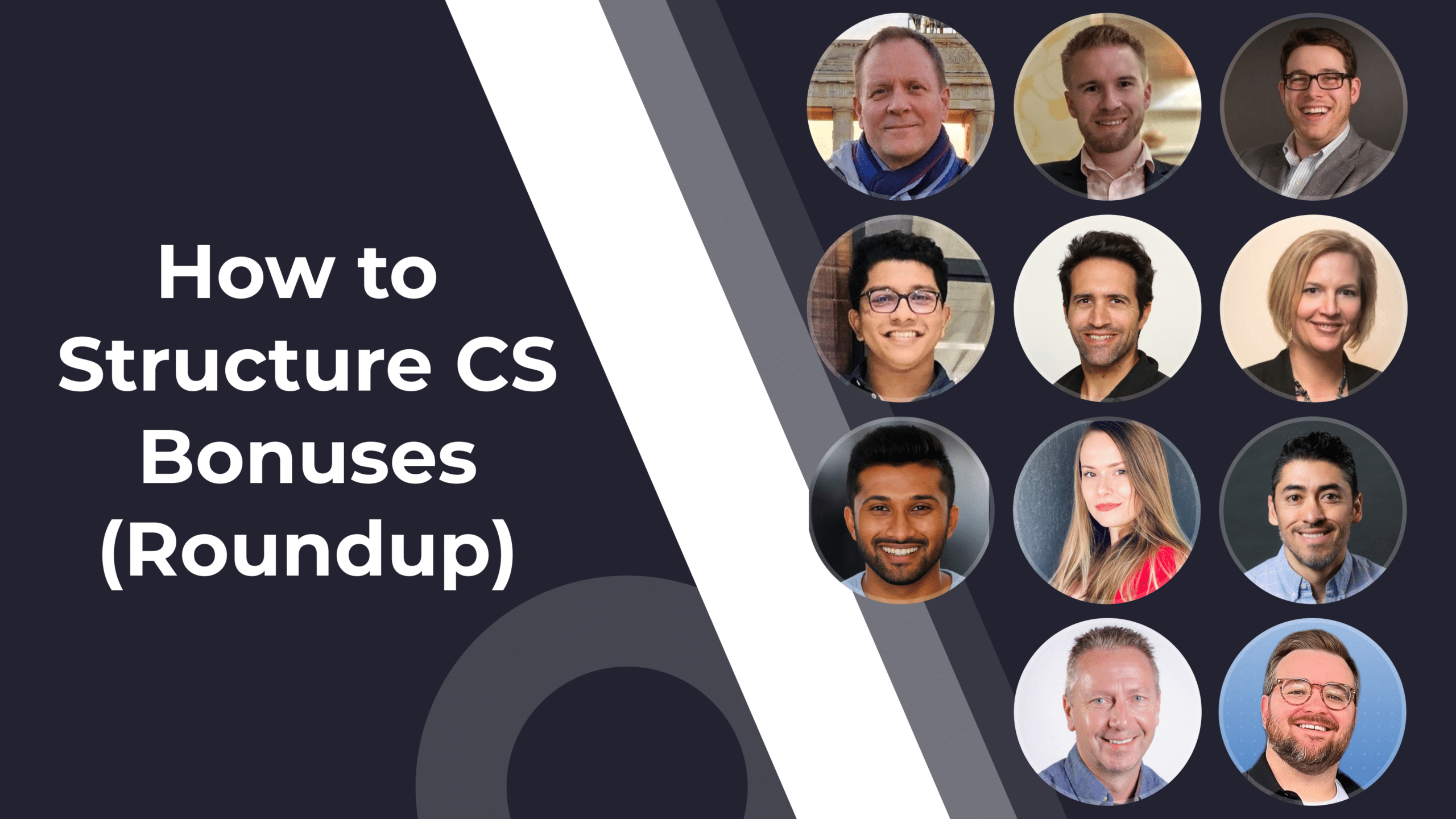Navigating the SaaS landscape? Then you know the customer journey isn’t merely a series of touchpoints—it’s the linchpin of your Customer Success strategy. But crafting that journey is far from straightforward; it’s akin to solving a complex puzzle. One misstep and you’re not just jeopardizing a sale—you’re risking long-term customer loyalty.
So, why is the customer journey so critical, particularly for B2B SaaS companies? And what obstacles are you likely to encounter? In this comprehensive guide, we’re diving deep. We’re going beyond the basics to unearth the challenges even seasoned SaaS professionals face. From dismantling data silos to aligning your cross-functional teams, we’ll explore how a well-executed customer journey can transition your Customer Success team from a cost center to a strategic asset.
Ready to elevate your customer journey from a challenge to a competitive advantage? Let’s delve in.
The impact of a good customer journey
Not only does a good customer journey have huge benefits for your CS function – and the teams operating it – but it can also have a massive impact on the wider business.
One of the biggest net outcomes of a well-optimized customer journey is the chance to streamline business operations.
In doing so, you’ll not only reduce the costs of servicing customers – but also increase revenue generated from them at the same time.
The upshot of all this is that CS teams can make a quantifiable contribution to improving the EBITDA margins of the business – making them indispensable – and giving CS leaders their rightful position of power and influence within the organization.
Common Customer Journey Challenges
As important as customer journeys are, developing a good customer journey that maximizes your customers’ experience and boosts your business results is easier said than done.
We don’t want to put you off – or make you think it’s an impossible feat – but there are a number of common challenges you’re likely to face in your quest for customer journey excellence. These challenges can include:
1. Navigating Data Silos
“83% of executives said that their organizations have data silos and 97% think silos have a negative effect”. American Management Association
If you don’t have a dedicated Customer Success Platform, then chances are your customer data is pretty much spread everywhere in your business.
Despite your best intentions, no doubt you’ll have:
- Initial sales information in your CRM
- Useful data hiding in your support ticket system
- Customer requests lurking in your email inbox
- Critical documents buried in your shared drives
- Product usage data languishing in your analytics tools
- And tons more…
Without a way to practically combine and track all this amazingly useful customer data in one place, getting a unified view of your customers will be impossible.
“Knowledge workers have reported spending nearly 29% (11.6hrs) of their week searching for the key information they need to do their work”. VentureBeat
You want your CSMs to spend their time adding value to your customers, not wading through multiple software systems trying to track down relevant data.
So, consider how you can break down the data silos in your organization and bring together customer data to transform your customer journey.
2. Not Knowing Your Processes – Or Having Any At All
You’d be surprised to learn how many people rush into making major changes to their customer journey – or adopting a new customer success platform – without thinking it through properly first.
“Tools are useful, but tools don’t solve process problems”.
Rob Stevens – Senior Director, Customer Success @ iBASEt
Refining your customer journey – or formalizing one for the first time – doesn’t have to be complicated, but you will need to do some groundwork first to see the best results.
What we mean by this is making sure you already know your current processes inside out and have a good idea of what you want to improve – and why.
Some key actions you can take to help you prepare:
- Audit your existing processes (or lack of)
- Map your current processes and identify gaps
- Speak to trusted customers for their honest take on the current journey
- Be realistic about what you can deliver based on resource constraints
- Use the MoSCoW prioritization framework to make sure you’re focusing on the right processes that will make the biggest impact.
Once you have a clearer idea of what you want your customer journey to look like and the processes it should involve, it’ll make it so much easier for you to manage.
3. Giving Mixed Messages
Customer Success and the customer journey isn’t just the responsibility of CS teams.
While, yes, the journey planning and rollout is likely to be spearheaded by the CS function, it’s important to recognize that the whole company should be involved in delivering the ultimate customer experience.
Throughout their time with your company, your customers will have various interactions with a wide variety of departments, so it’s important to get them all consistently ‘on message’.
We’ve seen countless examples of disjointed messaging, particularly within digital businesses.
It’s very easy for your ads to promise one thing and your website to promise something else entirely. Not to mention your email sequences delivering an entirely different message vs. the recommendations of your CSM – and this is all before your users have even started using your product.
In any given month, it’s not unrealistic for your customers to speak with:
Sales – either as they’re coming on board for the first time or if there is an expansion opportunity that your CS team has tasked sales with closing.
Support – maybe they need technical help with the product, or perhaps they just have some underconfident users. Whatever the case, it’s likely support will be a major touchpoint.
Marketing – whether it’s new business marketing, product marketing, existing customer marketing, brand marketing out in the wild, or a combination of them all, everyone needs to be on the same page to set expectations properly for the customer.
Billing – perhaps there is an issue with their billing, or maybe payment is overdue. Whatever the reason, customers will come into contact with your billing team. When creating invoices, ensure they are clear and accurate to prevent billing issues and expedite the resolution of overdue payments.
C-Suite – whether it’s the CEO speaking with the industry press, the CMO speaking at a conference, or one of your VPs taking part in a webinar, your customers will hear from major ‘influencers’ within your company.
Ensuring that the Customer Journey aligns with all these departments – and that there is a clear and cohesive understanding between you all – is critical to ensuring a high-quality total experience for your customers.
4. Tech-stack Limitations
Every CSM or CS Leader has been here.
Either their company is in early startup mode, or they’re still finding their feet with the whole ‘customer success’ thing.
It tends to mean a lack of investment, where they’re often given generalist tools to do a specialist job.
If this sounds familiar, you’ve probably squeezed every last drop of juice out of a tech stack that amounts to little more than a few shared spreadsheets and a Trello board.
By this point, either the spreadsheet you’ve been working on has failed to save properly, or someone has inadvertently written over all the data you’ve been meticulously collecting.
On top of this, your Trello board has gone from a ‘cool organizational tool’ to a place so jam-packed with tasks and overdue actions that you can’t bear to even look at the chaos anymore.
Sound about right?
Thought so.
Without the right tools to do your job, how can you ensure your customer journey is on point?
Using the wrong technology – or next to no technology at all – can seriously hinder your chances of delivering a top-notch experience for your customers. It means you’ll be missing out on things like:
- Real-time data
- Usage monitoring and alerts
- Scalable communication options
- Easy task management and prioritization
- At-a-glance overviews of how your customers are performing
Even if you and your team do persevere with sub-par tech, ultimately, you’re going to risk:
- CS team burnout
- Delivering a sub-par experience
- Failure to properly control your customer journey
- Customer frustration
- Customer churn
- No customer advocates
So, you have to ask yourself, is your technology holding you back? Are the limitations and potential risks worth it?
5. Keeping It Personal
We’ve all been there, dealing with a customer who thinks they’re special or different from the rest.
The truth is, they may have a point.
Many companies think they’re doing the right thing, being ultra-efficient, in operating a ‘one size fits all’ customer journey.
On paper, that seems like a great idea, but in practice, your customers will have different wants, needs, and preferences.
“71% of consumers expect companies to deliver personalized interactions – and 76% get frustrated when this doesn’t happen”. McKinsey
Often, these differences can be based on the scale of the customer’s company and how many people are using your product – so this can be an easy way to segment your customer journey.
On top of this, you should consider how you can shape and adjust your customer journey to work with your customers in a more personalized way.
For example, you may have just signed a huge enterprise deal where your customer needs additional reporting or wants to schedule additional regular meetings with you.
Instead of being limited by a rigid and prescriptive customer journey that prohibits this kind of flexibility, think about how you can adapt your offering for this customer – and even charge more for it as a result.
Every journey is different
Roadmapping the customer journey of your clients comes with many benefits, including a smooth customer onboarding and increased customer satisfaction. However, there might be some bumps in the road.
The challenges we presented are not the only ones you might encounter, but they are some of the most common. Depending on the customer journey of your clients, you should always make adjustments along the way, be flexible and understand their needs.




